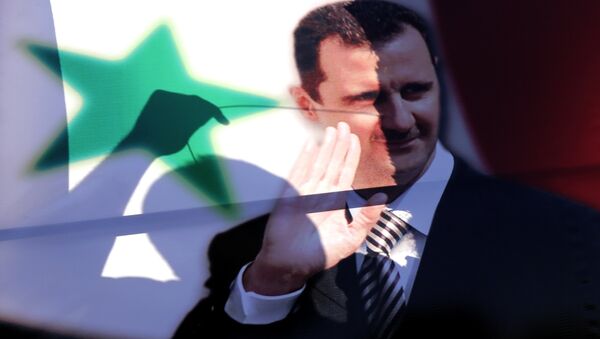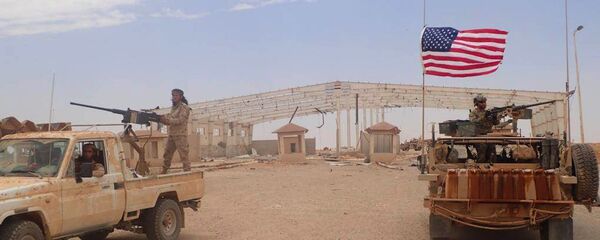"The plan of Bashar Assad's overthrow is completely impossible as now the Syrian army is strong as ever," Muhammed Issa told Sputnik Arabic.
According to him, the Syrian people are happy about that, while militants fear it as they are no longer advancing on the battlefield.
On June 8, the US-led coalition bombed pro-Damascus forces near al-Tanf in the area of a deconfliction zone following an alleged attack by a combat drone resulting in no coalition forces' casualties. This was the third attack by the coalition on Damascus' allies in the area. The coalition targeted a drone and trucks with weapons.
The Russian Defense Ministry slammed the move, saying that it seems that the US-led coalition is more interested in bombing the Syrian army instead of fighting terrorists. It also accused the coalition and Syrian rebels it supports of "conspiring" with Daesh leaders by letting them leave encirlement and move to other areas.
This week, the United States transferred two High Mobility Artillery Rocket System (HIMARS) multiple-launch rocket systems from Jordan. The systems were deployed at the US special operations forces base near al-Tanf located 11 miles from the Jordanian border. Russian Foreign Ministry condemned the move, saying that the HIMARS missile systems could strike Syrian pro-government forces in the area.
Issa said he believes that the US bombings are allegedly linked to a gas pipeline from the Persian Gulf to Europe and Turkey.
"The US missile attack is nothing more than a statement of its position on the creation of a Daesh quasi-state, which should appear along the Syrian-Iraqi border up to Jordan. According to the plot, this formation should cut Syria from Iraq and Iran and turn it into an insignificant small state in the Middle East. And through the territory of this quasi-state, a gas pipeline from Qatar and Saudi Arabia to Turkey and Europe must be laid," the Syrian expert noted.
Issa said that the Syrian army actively opposes the implementation of such a plan as the government troops have been transfered to the border with Iraq, adding that the fight to liberate al-Tanf is also underway.
According to the general, there will be no direct clash of the Syrian army with the US troops, but "if it is necessary, the Syrian army is ready to repel an enemy's attack on the Syrian land."
On June 6, the Pentagon announced the coalition conducted a new strike on pro-Syrian government forces as they entered the de-confliction zone with Russia and posed threat to its personnel. The force comprised of a tank, artillery, anti-aircraft weapons, armed technical vehicles and more than 60 soldiers. A Syrian source told Sputnik on Tuesday that at least two Syrian servicemen were killed and more than 15 injured as a result of the coalition attack.





